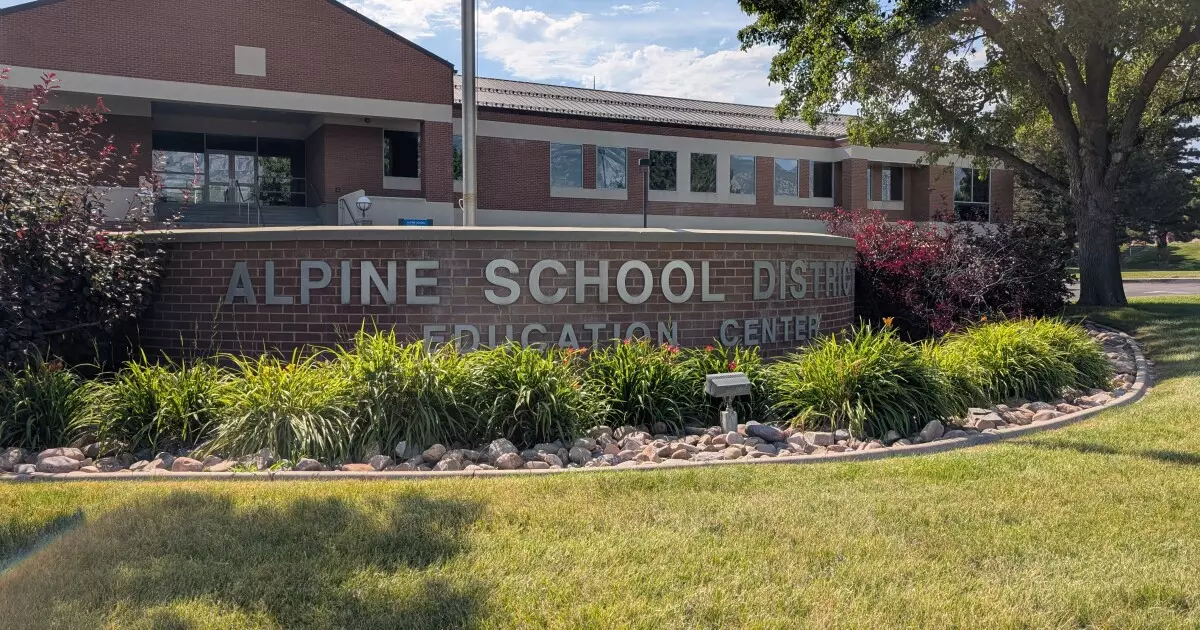Utah’s Alpine School District is undertaking a groundbreaking maneuver that could reshape the landscape of public education funding. The district’s decision to split into three autonomous entities—central, west, and south—signals a calculated move to decentralize governance and empower local control. However, behind this promising narrative lies a complex web of financial commitments that could threaten the fiscal stability of the regions involved. The recent $201 million bond issuance exemplifies the risks and strategic gambles embedded within this restructuring. While proponents applaud the measure as a means to tailor educational infrastructure to local needs, skeptics rightly question whether the debt management framework is robust enough to withstand future economic headwinds.
This split isn’t merely about shifting boundaries; it’s a political act that consolidates local influence while diffusing financial liabilities across newly created jurisdictions. The reliance on bonds—particularly lease revenue bonds—is inherently risky, especially when significant obligations are transferred to districts that, until recently, operated under a unified fiscal regime. The assumption that these newly minted district entities can manage their debt responsibly assumes a level of local fiscal discipline that remains untested. The long-term repercussions of such a division could result in uneven creditworthiness, with some districts bearing a disproportionate burden that may hinder growth or compromise educational quality down the line.
Debt Structures and Economic Fragility
The structured use of lease revenue bonds introduced a paradox: it allows districts to bypass immediate voter approval limits, yet it shifts the financial risk onto future lease payments. Alpine School District’s plan to allocate nearly $227 million of debt to the west district exemplifies this strategic approach. But it’s a risky game—particularly when a district’s long-term liability profile is inherently weak, according to Fitch Ratings’ assessment. The downgrade outlook from stable to negative signals apprehension over the district’s capacity to sustain debt service amid shifting demographic and economic realities.
The rating agencies’ perspectives reveal a tension intrinsic to the deal. Fitch’s acknowledgment of the district’s “good stewardship” is balanced by concerns over its “weak” long-term liability burden. Similarly, Moody’s Aa2 rating, just a notch below the district’s AAA credit rating, underscores the transition risk. This risk stems from the fact that Alpine will serve the debt for only two years before it transitions to the new west district—an unloved ‘hot potato’ that could complicate finance and governance. If the west district fails to establish a stable revenue base or encounters enrollment stagnation, the entire financial architecture risks destabilization. The debt infrastructure, while appearing meticulous on paper, hinges on assumptions that could be invalidated by unforeseen economic downturns.
The Political Rationale and Civic Implications
The legal enablers—most notably Senate Bill 188—embolden these financial strategies. By removing caps on bond issuance without voter approval, policymakers incentivize districts to leverage debt for rapid infrastructure development while shifting the burden away from immediate consensus. This legislative shift highlights a broader political philosophy: local control and fiscal independence are desirable, but only insofar as they align with a pragmatic view of governance and risk.
From a liberal center-right standpoint, this move could be viewed as a nuanced approach to balancing local autonomy with fiscal responsibility. Certainly, empowering local communities to tailor educational facilities and governance structures resonates with principles of decentralized decision-making. However, it also demands a disciplined approach to debt management—a discipline many districts may lack, especially as they transition through the unfamiliar territory of independent operation. The potential for future debt spirals, underfunded schools, or overstretched budgets is palpable if local officials prioritize short-term infrastructure gains over long-term sustainability.
Furthermore, this strategic split may exacerbate existing inequalities. Districts with stronger assessed values and better economic fundamentals might absorb the debt more comfortably, while weaker areas could struggle with higher relative liabilities. Such disparities risk creating a patchwork educational landscape where some communities thrive while others flounder under financial strain.
The Risk of Overconfidence and Future Uncertainty
Underlying this bold financial maneuver is an overconfidence in projected growth and the assumption that the new districts will maintain stable revenue streams. The development of new schools in the west district is a visible symbol of commitment to growth; yet, it assumes continuous enrollment increases, stable property values, and resilient tax bases. These assumptions, while reasonable today, are perilous in a dynamic economic environment characterized by volatility, demographic shifts, and inflationary pressures.
The speculative nature of these bonds reminds us that fiscal health is fragile, especially when built on optimistic projections. Relying heavily on lease revenue bonds—an instrument that effectively shifts the debt burden to future lease payments—carries inherent danger: if the anticipated growth does not materialize, the debt will become an albatross around the district’s neck. The political allure of immediate infrastructure expansion often obscures the long-term fiscal liabilities that such bonds impose.
In this context, the Utah Alpine School District’s split reveals a wider lesson: decentralization and local control, while appealing, must be underpinned by stringent financial oversight. Without it, well-intentioned efforts to improve educational facilities may instead sow the seeds of fiscal crises that could threaten the quality of education and community stability for generations to come.

